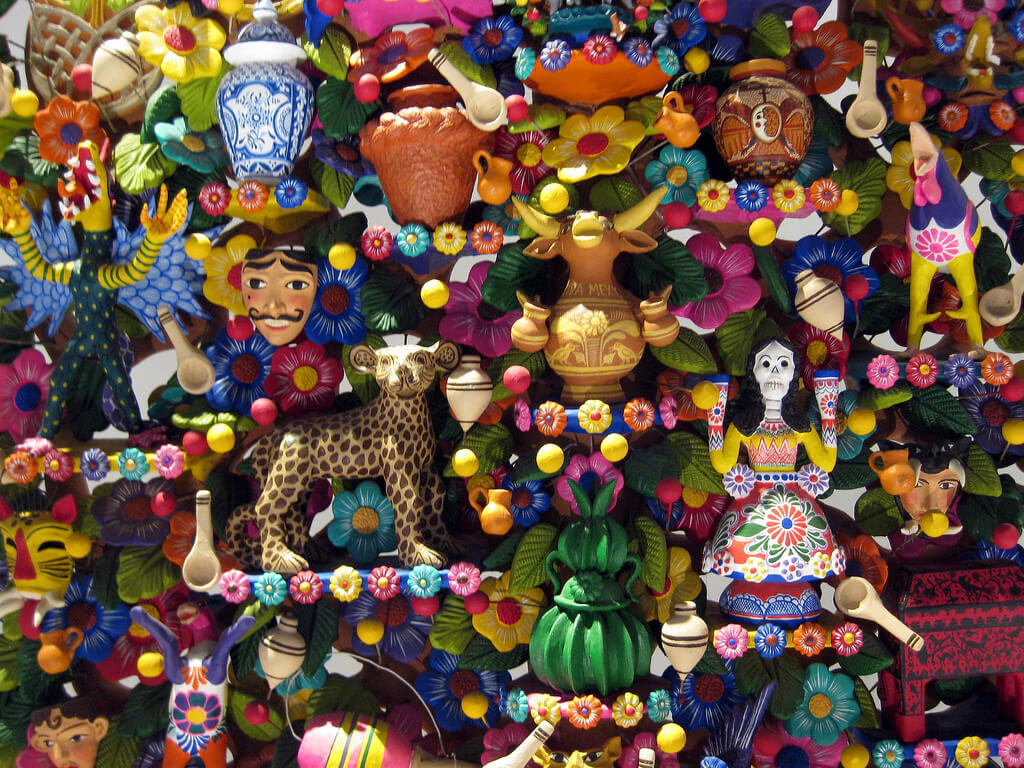Mexico is a country rich in culture, history, and tradition. One of the most significant aspects of this culture is its artisanries, or handcrafted goods. These pieces of art reflect the country’s diverse heritage, and each region has its own unique style and technique. From colorful textiles to intricate pottery, these elements are a testament to the country’s creativity and craftsmanship.
We recommend you analyze the different options offered by the country to choose the best area to visit. Travel to Mexico represents adventure, flavor, and a lot of tradition, so you can’t miss the opportunity to rest in this country.
Textiles in Mexico: A Rainbow of Colors
Mexican textiles are some of the most beautiful in the world, featuring vibrant colors and intricate designs. The tradition of weaving dates back thousands of years, and many indigenous communities still practice this art today. Some of the most famous textiles in Mexico include:
Huipil: A loose-fitting tunic worn by women in many regions of Mexico. Each huipil is unique, featuring intricate designs that represent the weaver’s community, family, and beliefs.
Rebozo: A long, rectangular shawl worn by women as a symbol of femininity and elegance. Rebozos are often made of silk or cotton and feature beautiful patterns and fringe.
Sarape: A colorful, striped blanket often worn as a poncho. Sarapes are woven on a large loom and are typically made of wool or cotton.
Pottery: From Oaxaca to Jalisco
Mexican pottery is another art form that dates back centuries, with each region having its own unique style. From the earthy tones of Oaxacan pottery to the bright colors of Jalisco ceramics, Mexican pottery is a beautiful and functional art form. Some of the most famous types of Mexican pottery include:
Talavera: A type of glazed pottery that originated in Spain but was brought to Mexico by Spanish colonizers. Talavera is known for its vibrant colors and intricate patterns and is often used to make plates, bowls, and vases.
Barro Negro: A type of pottery made in the Oaxaca region using black clay. The pottery is often decorated with intricate designs and is known for its smooth, shiny finish.
Mata Ortiz: A type of pottery made in the Chihuahua region that is known for its fine detail and thin walls. The pottery is often made using ancient techniques that have been passed down through generations.
Woodcarving: A Window into Mexico’s Folklore
Mexican woodcarving is a tradition that dates to pre-Columbian times, with many indigenous communities still practicing this art today. The carvings often depict scenes from Mexican folklore and mythology and are beautifully detailed. Some of the most famous types of Mexican woodcarving include:
Alebrijes: Colorful, fantastical creatures that are often made of copal wood. Alebrijes are a relatively recent invention, having been created by a Mexican artist in the 1930s.
Masks: Wooden masks are used in many traditional Mexican dances and rituals. Each mask is unique, representing a different character or spirit.
Nichos: Small, decorative boxes made of wood and glass. Nichos often feature religious or folk art themes and are used to display small statues or other objects.
Mexico’s artesanias are a testament to the country’s rich cultural heritage, and each piece tells a unique story. Whether you’re drawn to the vibrant colors of Mexican textiles or the intricate designs of Talavera pottery, there is something for everyone. The next time you visit Mexico, be sure to explore the country’s many artisan markets and galleries to discover these beautiful art.

